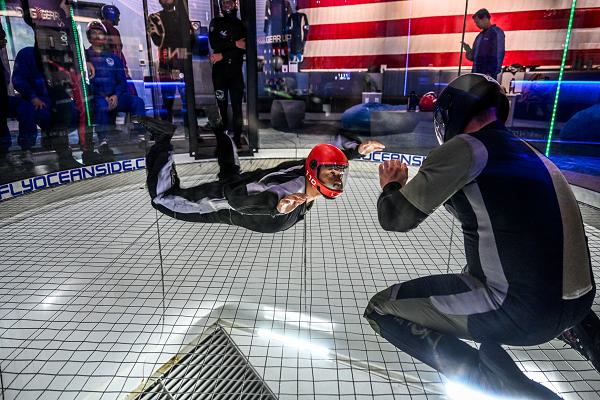
Oceanside, California. (May 6, 2024): For civilians, wind tunnels are an exhilarating thrill. For Special Forces personnel, they are a vital training tool to prepare for dangerous free fall operations into enemy territory. In this photo by Lieutenant Junior Grade Rae Timberlake, Sailors assigned to West-coast explosive ordnance disposal (EOD) units practice body control techniques during free fall training in a wind tunnel.
Using these devices has several advantages over jumping from an actual airplane. First, wind tunnels are safer. Free fall conditions are simulated in a controlled environment and participants are carefully monitored by an experienced jumpmaster. What is more, vertical wind tunnel training increases a jumper’s survivability by simulating malfunctions and in-air emergencies that could occur.
Another advantage is that participants can practice a series of body positions, corrective actions, and emergency procedures in a controlled manner. These multiple “jumps” are recorded and reviewed afterward with instructors. The tunnel generates 1600 horsepower using four fans to create a cushion of air on which participants safely float. This cushion gives the realistic experience of falling through the air at 125 miles per hour. Jumpers work on staying stable, making 360 degree turns, and sliding back and forth in the air. Once these basic movements are mastered, jumpers concentrate on managing the in-air emergencies they may encounter, including helping fellow sky divers in trouble.
EOD special forces are airborne qualified to deploy anywhere in the world as part of the Navy’s Expeditionary Combat Command. Once on the ground, these highly skilled special operators identify and render safe explosive ordnance including improvised, chemical, nuclear, and biological weapons. Their missions take them to every climate, from desert to jungles, in support of the Army, Navy and Marine Corps.


